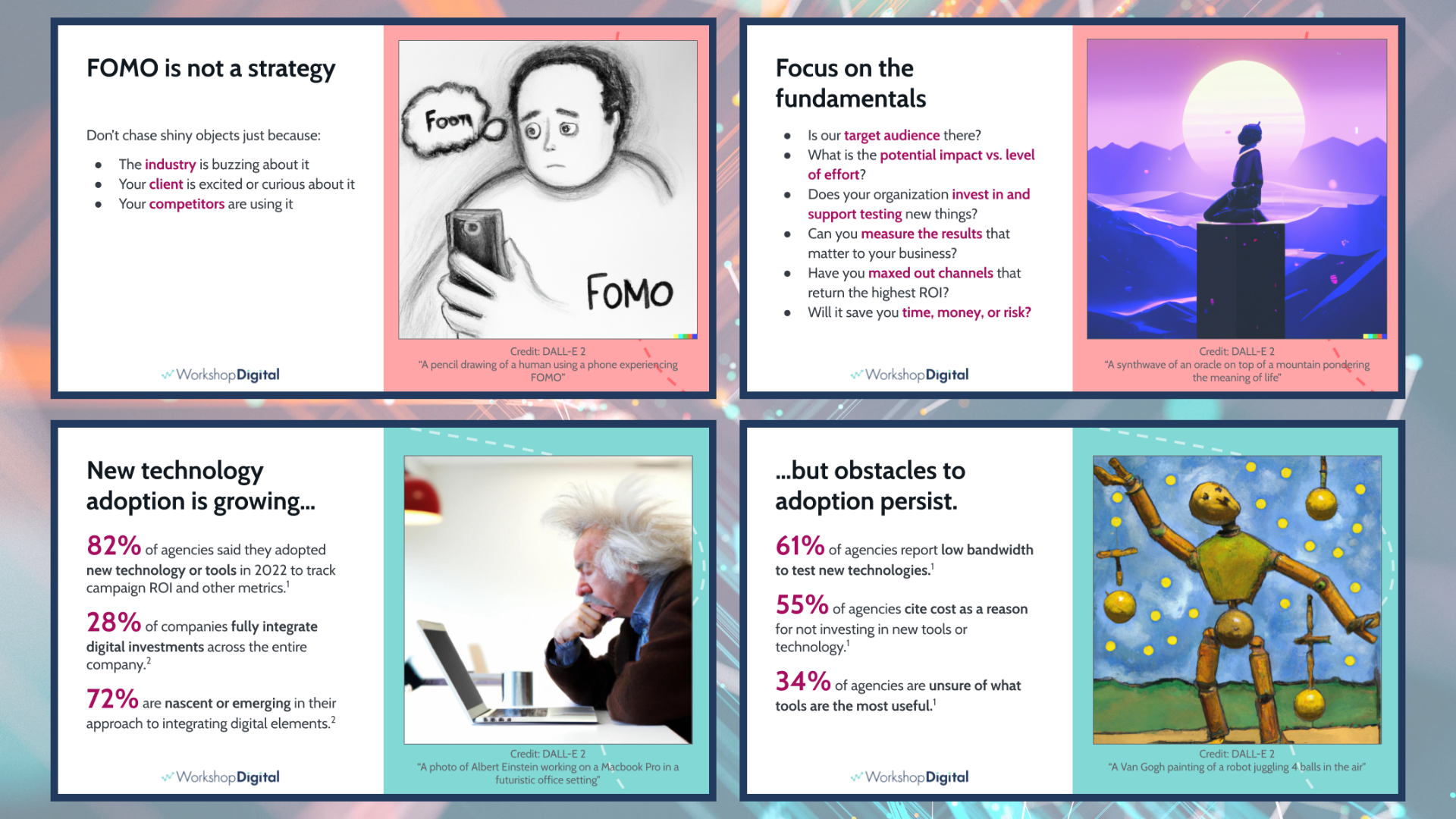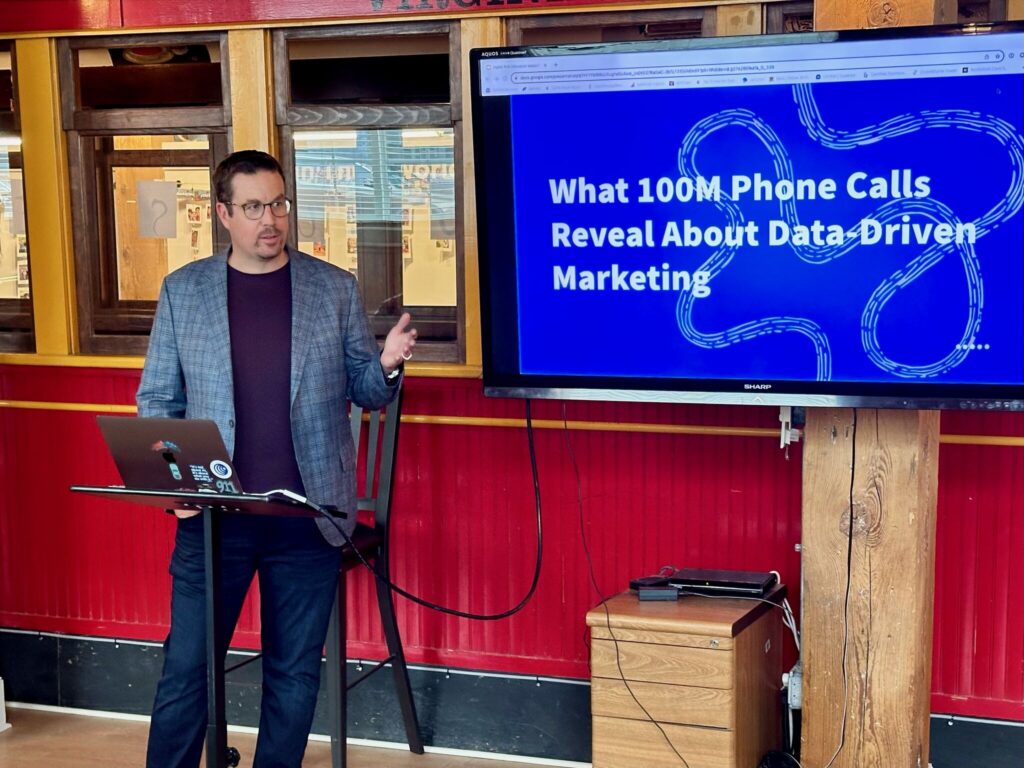I enjoyed presenting “Decoding the Hype: Separating Fact from Fiction in the Latest Marketing Technologies” at the DigitalRVA meetup on Wednesday. We had great conversations throughout and I wanted to share a summary of the key takeaways even if you weren’t able to make it in person.
First off, FOMO is not a winning strategy for adopting new tech. We shouldn’t chase the shiny objects just because our industry, clients, or competitors are buzzing about them. Evaluating any new technology starts with an honest conversation about your goals and tolerance for testing.
We often start conversations with these questions:
- Is our target audience there?
- What is the potential impact vs. level of effort?
- Does your organization invest in and support testing new things?
- Can you measure the results that matter to your business?
- Have you maxed out channels that return the highest ROI?
- Will it save you time, money, or risk?
Ready to jump in and test some new marketing tech or update your strategies? Here are the 4 areas I covered and some observations from our teams:
AI-Powered Tools: AI-powered tools have come a long way in recent years, making data analysis, content creation, and customer targeting more efficient and accurate. Here are the main points to consider:
- AI is effective for analyzing large data sets and automating repetitive tasks.
- While AI is useful for generating insights and assisting with strategy, it still requires human intervention for creative aspects and ethical decision-making.
- AI should be viewed as a complement to your marketing strategy, not a replacement for human expertise.
Virtual Reality (VR) and Augmented Reality (AR): VR and AR offer immersive, interactive experiences that can transform marketing campaigns. However, they may not be the best fit for every business. Key points to remember:
- VR and AR work best for experiential marketing campaigns or product demonstrations.
- Cost and technological barriers may limit adoption for some businesses.
- Consider your target audience and whether VR or AR experiences align with their preferences and expectations.
Programmatic Advertising: Platforms and tools help companies automate the buying and selling of digital advertising to reach consumers across devices and channels. The channels can include digital display ads, social media ads, native ads, mobile ads, digital out of home, connected TV, video/audio streaming, and more! If you’re considering programmatic marketing, remember that:
- It can increase your reach against highly targeted audiences with realtime optimization for greater efficiency.
- Starting budgets are often higher.
- Conversion data is necessary for fine-tuning the bidding algorithms and improving performance.
Personalization: Personalization technologies help marketers create more relevant, engaging website and app experiences. Remember the following:
- Use the data you have to understand your customers’ preferences and behaviors.
- Personalization should be a balance between customization and privacy.
- Implement personalization in a way that is authentic and enhances the customer experience without being intrusive.







